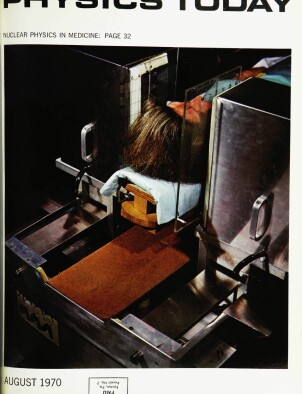Nuclear physics in medicine
AUG 01, 1970
Radioisotopes now vie with x rays as tools for diagnosis and treatment; high‐energy beams, neutrons and pions are also becoming important for radiation therapy.
DOI: 10.1063/1.3022281
RADIATION THERAPY and radioisotope imaging have become as common to modern medicine as stethoscopes and hypodermic needles. They illustrate the impact that nuclear physics has had upon medical diagnosis and therapy. For example, the design of particle accelerators led to radiation treatment with increasingly higher energies. Nuclear reactors provided a wide variety of radioisotopes for nuclear medicine. Development of instruments such as the Anger camera have improved imaging techniques. At times, nuclear physicists themselves have decided to apply their skills to health‐related areas, and an increasing number of young physicists are now entering this field.
This article is only available in PDF format
References
1. Aspects of Medical Physics (J. Rotblat, ed.), Taylor and Francis, London (1966).
2. Instrumentation in Nuclear Medicine (G. J. Hine, ed.), Academic, New York (1967).
3. Principles of Nuclear Medicine (H. N. Wagner Jr, ed.), Saunders, Philadelphia (1968).
4. “High‐Energy Radiation Therapy Dosimetry” (J. S. Laughlin, consulting ed.) in Ann. N.Y. Acad. Sci. 161, 1 (1969).
5. Radiation Dosimetry (2nd ed.) I, II, III (F. H. Attix, W. C. Roesch, E. Tochilin, eds.) Academic, New York (1966, 1968, 1969).
More about the Authors
Gordon L. Brownell.
Massachusetts Institute of Technology.
Robert J. Shalek.
University of Texas.
© 1970 American Institute of Physics
